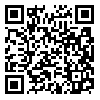BibTeX | RIS | EndNote | Medlars | ProCite | Reference Manager | RefWorks
Send citation to:
URL: http://jdm.tums.ac.ir/article-1-277-en.html
Background and Aim: Human and animal studies linking fluoride with diminished intelligence have been published. Although adverse effects of high intake of fluoride on intelligence and mental acuity continue to be reported, they are still controversial. The aim of this research was to investigate the relationship between fluoride in drinking water and children's intelligence.
Materials and Methods: In this cross sectional study, 41 children were selected from the high fluoride area with 2.5mg/l (ppm) fluoride in the drinking water and 85 children were selected from low fluoride area with 0.4mg/l (ppm) fluoride in the drinking water. The intelligence quotient (IQ) of each child was measured by the Raven's test. The history of illnesses affecting the nervous system, head trauma, birth weight (2.5kg or 2.5kg), residental history, age and sex of children were investigated by questionnaires completed by the children's parents. Data were analyzed by Chi-Square test with p<0.05 as the limit of significance.
Results: In the high fluoride area the mean IQ of children (87.911) was significantly lower than in the low fluoride area (98.912.9) (P=0.025).
Conclusion: Based on the findings of this study, exposure of children to high levels of fluoride may carry the risk of impaired development of intelligence.
Received: 2005/04/17 | Accepted: 2006/04/15 | Published: 2013/08/18
| Rights and Permissions | |
 |
This work is licensed under a Creative Commons Attribution-NonCommercial 4.0 International License. |




